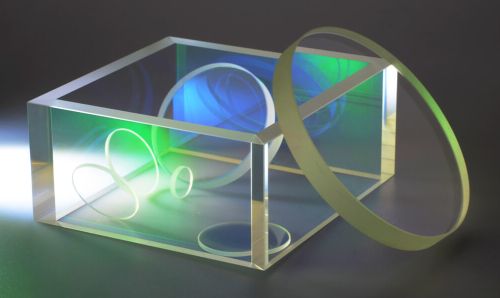The mirror can be defined as an object with a coated back that reflects light when it got the surface in turn obeying the laws of reflectivity. When light falls on a surface of the mirror, some of the light may be reflected, some absorbed, and some transmitted through the body. For a smooth surface to act as a mirror, it must reflect as much of the light as possible and must transmit and absorb as little as possible. To reflect light rays without scattering or diffusing them, a mirror’s surface must be perfectly smooth or its irregularities must be smaller than the wavelength of the light being reflected. This mirror comes in different forms, some are flat, some curve outward (convex mirror), some are curved inward (concave) and some are a combination of two. Plane mirrors are flat, they generate a perfect image of any object before it. You can shop fur the best arrays of cube beamsplitters plate at arocorp. The optics mirrors and lenses is a transparent optical component used to converge or diverge light emitted from a peripheral object. The transmitted light rays then form a real or virtual image of the object. You can’t talk about light ray transmission without talking about lenses, because they are good transmissive objects. Lenses are used for transmission purposes, magnification, Correction of optical aberrations, burning glasses, Image focusing, or image projection. This lens comes in shapes like biconvex, biconcave, plano-convex, plano-concave, positive meniscus, and negative meniscus. When working with lenses, it is important to consider the lens focal point as it’s an important factor in any form of lens application. The focal length is the distance from the lens to this point, as indicated in the image. A positive lens has a positive focal length, while a negative lens has a focal length less than zero. Lenses are classified into spherical lenses, cylindrical lenses, achromatic lenses, fresnel lenses, gradient index lenses
Convex Mirror
The convex mirror is also known as diverging mirror comes with its optical surface bulging outward towards the light source. They reflect light outward, therefore, making it hard to use it to focus light. The image on a convex mirror is always virtual diminished and upright for example cars rare side mirrors. Different types of optical Polarizer optics are available at Alpine research optics.
Concave Mirror
The concave or converging mirror comes with its optical surface curving inward away from the source of light which makes it reflect light inward, the example is in the telescope.
Types Of Lenses
Positive Lenses
The positive lens is a type of lens that causes a collimated light beam to travel parallel to the lens axis and passes through the lens and then converge or focus on a spot behind the lens.
Negative Lenses
Negative Lenses, cause the collimated light beam to diverge and spread behind the lens. Concave lenses biconcave and plano-concave are negative.
Meniscus lenses
Meniscus lens is a lensing system that comes with two spherical curved surfaces, convex on one side and concave on the other side with a thick center. When a meniscus lens is combined with another lens, the focal length is shortened and the numerical aperture of the system is increased.







